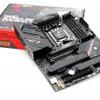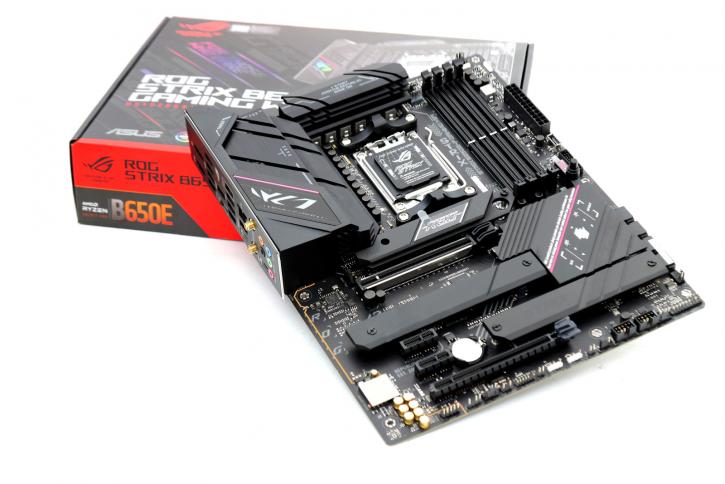Words & Conclusion
Final Words
With the new AM5 socket, you need at least the B650 Motherboard to use the Ryzen 7000 series processors. As the base chipset, the B650E gives up a lot of features and has less functionality than the B650E, X670, and top-of-the-line X670E chipsets. Support for PCIe Gen 5.0 is one of the most important things that sets these two chipsets apart. The low-cost B650 chipset only has 18 PCIe 5.0 lanes, so some manufacturers may leave out the full-sized PCIe Gen 5 x 16 slot in favour of faster M.2 Gen 5.0 slots. Also, AMD has made it clear that manufacturers can choose to take Gen 5.0 support out of their B650 motherboards completely if they want to. B650E, on the other hand, is much more generous with its PCIe lanes. It has 20 PCIe Gen 5.0 lanes, so your graphics cards and M.2 slots can take advantage of faster speeds. The B650E chipset has all of the basic features that the B650 chipset has, plus a lot more. For example, it has more PCIe Gen 5.0 lanes, more I/O ports on the back, and more M.2 slots. With B650 boards, you can expect weaker VRM designs and worse heatsinks. In the end, the B650E chipset is better than the B650 chipset in terms of tweaking and core features. However, if you are on a tight budget and do plan to tweak + miss out on some of the newer features that are only available on the AM5 chipset, the B650 chipset will work just fine. We utilized a DDR5 6000 CL30 kit for this review (slightly crisper timing than the usual CL40). If you read our memory scaling article, it isn't very pleasant to see how close performance is compared to a DDR5 5200 MHz CL40 configuration). What a fun motherboard for the money, though! A lot can be said and stated about X670(E) versus B650(E), but for a B series motherboard, you'll get plenty of features as long as you do not plan to tweak your processor with, say, subzero cooling. BTW you can still tweak it, but with a different approach. The motherboard has a sophisticated enough power phase design, so you could add in a Ryzen 7 7950X processor just as well and be done with it. So what will you be lacking with B650, then? On some level of tweaking support, most manufacturers will drop PCIe 5.0 support in favour of PCIe 4.0. So, even with B650, you're 95% there for all your common needs and requirements. I mean, 5 M2 slots and multiple Ethernet links are nice, but do you really need it? The tradeoff can be nicer; this motherboard is expected to retail for just over 225 USD, pair it with a Ryzen 7 processor as shown today and you'll still be amazed by the performance. However, the caveat will be DDR5 memory; it's still somewhat expensive, making the platform overhaul too expensive.
Energy efficiency
Added chips, RGB, and BIOS configuration are a bothersome factor when testing stuff like this. The motherboard Ryzen 7000 performs a little out of the scope of our normal realm. Expect a 70-80 Watts power draw in IDLE. Under total stress on the processors, the system comes back at roughly 225-250 Watts. Energy efficiency for this motherboard and processors as such are average at best. Keep that in mind with your cooling choice, as processor wattage usually is 1:1 in line with cooling performance. For any Ryzen 7000 series processor, we recommend a proper LCS (all-in-one liquid cooling kit), but a good heatpipe cooler could also be functional (the processor can take the heat, we're not sure if you'd like the noise of the cooler fans though).
The conclusion
The Strix B650E-F Gaming WiFi, like the rest of the ROG Strix B650E range, comes with a solid VRM setup. The B650E-F Gaming WiFI's 12+2 power phase architecture will meet most of your overclocking needs, giving you adequate overclocking space to squeeze a little more performance out of your Ryzen processor. ASUS has clearly paid close attention to its thermal design, packing it with a plethora of heatsinks to ensure that your VRMs and NVME drives do not exceed the recommended temperature limit. Furthermore, high-conductivity thermal pads promote heat dissipation, lowering total temperatures. The ROG Strix B650E-F Gaming WiFi employs a single full-sized Gen 5.0 x 16 slot, which serves as the motherboard's primary slot and houses the graphics card. In addition, two more PCIe Gen 4.0 slots are located beneath the primary slot. It has a single Gen 5 M.2 slot and two independent Gen 4 slots for all your storage needs. In addition, four SATA 6G ports are also available to accommodate your 2.5-inch hard drives or SSDs. Next-generation technologies like PCIe Gen 5.0, DDR5 memory support up to 6400 Mhz are present, and PCIe Gen 5.0 M.2 are included. It is also worth noting that it has a total of 10 USB Type-A ports on the back I/O, which is always a welcome addition, especially on low-cost boards. ASUS has left no stone unturned in equipping the B650E-F Gaming WiFi with the best features available in this price range. From a proper 14-phase VRM configuration to an outstanding range of rear I/O ports and even WIFI6E for that 6 GHz band. Currently, it's priced at a bit on the high side at 300-350USD/EUR. That's still a lot of money but far more value for money than anything with an X670 chipset. Overall, the platform as such we can recommend. But that total cost of ownership remains tough.
- Sign up to receive a notification when we publish a new article
- Or go back to Guru3D's front page.



